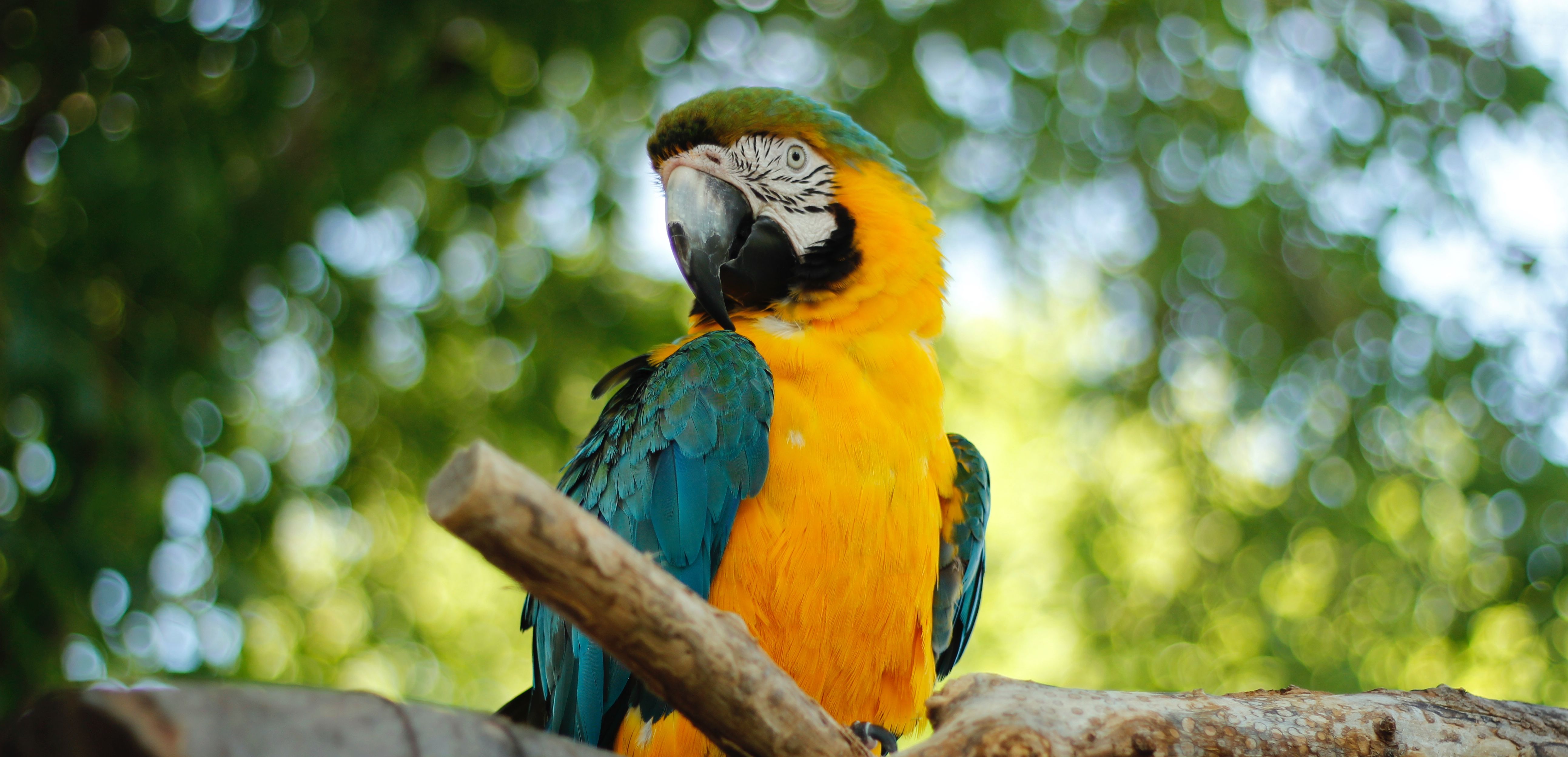Animals
Lincoln Children’s Zoo is home to over 400 animals including giraffes, cheetahs, tigers, giant anteaters, red pandas, Humboldt penguins, ring-tailed lemurs, and Galapagos tortoises. Learn more about each of the animals that live here by exploring the areas below.
*This is not an all inclusive list of the animals at Lincoln Children's Zoo
-
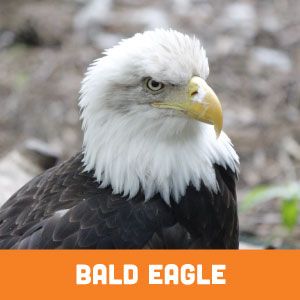
Bald Eagle
Haliaeetus leucocephalusCONSERVATION STATUS
Least ConcernNATURAL HABITAT
The Bald Eagle nests in trees in North America near large bodies of open water where they can find an abundance of fish.DEIT
IN THE WILD – Fish, carrion, small mammals and reptiles
IN THE ZOO – Fish and rodentsFASCINATING FACTS
• Can see up to 1.5 miles
• Can carry eight pounds of food while flying
• Known for building large nests
• Largest recorded nest was 9 feet wide and weighed more than two tons
• The Zoo’s eagles are injured birds that have been rehabilitated and are not able to be released into the wild -
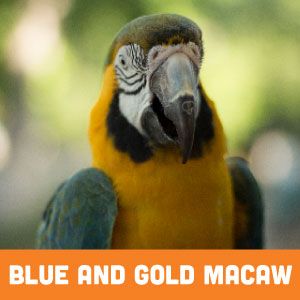
Blue and Gold Macaw
Ara araraunaCONSERVATION STATUS
Least ConcernNATURAL HABITAT
The macaw is found in forests, rainforests, woodlands or savannah-like habitats depending on species.DIET
IN THE WILD – Fruit, nuts and seeds
IN THE ZOO – Nuts, seeds, apples and bananasFASCINATING FACTS
• Males and females look alike
• Mate for life
• 17 different species of macaws
• Use beak as a third foot when climbing
• Can travel up to 35 mph due to wide wingspan and hollow bones -
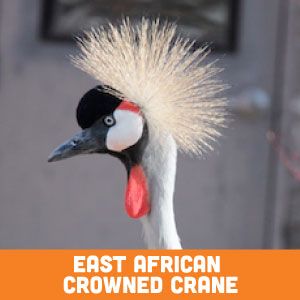
East African Crowned Crane
Balearica regulorumCONSERVATION STATUS
EndangeredNATURAL HABITAT
The East African crowned crane lives in dry savannahs.DIET
IN THE WILD – Plants, seeds, insects, worms, frogs and small fish
IN THE ZOO – Specially formulated grain and insectsFASCINATING FACTS
• The Mohawk on top of their head is actually feathers
• Fossil records indicate crowned cranes lived 37 to 54 million years ago
• Can live up to 50 years
• Only cranes to perch in trees -
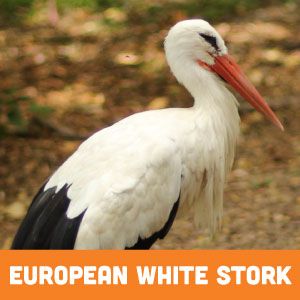
European White Stork
Ciconia ciconiaCONSERVATION STATUS
Least ConcernNATURAL HABITAT
The European white stork prefers open lands without tall trees or thick vegetation, usually in or near wetlands.DIET
IN THE WILD – Insects, worms, frogs, fish, lizards, snakes and small rodents
IN THE ZOO – Fish, meat and specially formulated grainFASCINATING FACTS
• Build large nests that can reach lengths of more than 7-feet across
• Can eat up to 60 percent of body weight per day
• Fly by soaring on warm air currents, with long, broad wings that flap occasionally
• Nest on roofs and chimneys of houses in the spring -
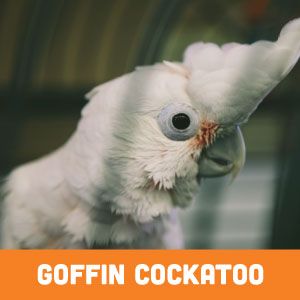
Goffin Cockatoo
Cacatua goffiniCONSERVATION STATUS
Near ThreatenedNATURAL HABITAT
Goffin cockatoos live in the Tenimber Islands of Indonesia.DIET
IN THE WILD – Seeds, nuts
IN THE ZOO – Parrot chow, fruits, seedsFASCINATING FACTS
• Are social and friendly
• Smallest cockatoo species
• Live 30+ years
• Introduced to the wild in Puerto Rico, Singapore, and Kai Islands
• Deforestation and bird trade affect its population -
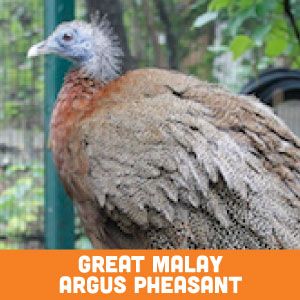
Great Malay Argus Pheasant
Argusianus argusCONSERVATION STATUS
VulnerableNATURAL HABITAT
The Great Malay Argus Pheasant lives in dry, lowland primary and logged forests.DIET
IN THE WILD – Fruits, ants, slugs, snails, meat and insects
IN THE ZOO – Fruits, vegetables, greens, seeds, insects and grainFASCINATING FACTS
• Male's call can travel up to a half a mile
• Females look different from males and are easy to tell apart
• Males have longer wing and tail feathers than females
• Males have feathers with "eyes" on them called "ocelli" -
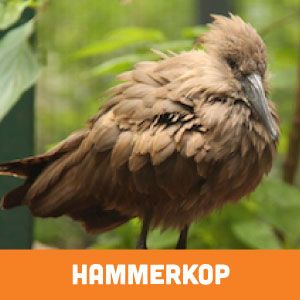
Hammerkop
Scopus umbrettaCONSERVATION STATUS
Least ConcernNATURAL HABITAT
Hammerkops live in South and Central Africa.DIET
IN THE WILD – Frogs, fish, invertebrates
IN THE ZOO – Fish, meatFASCINATING FACTS
• There are many legends surrounding hammerkops
• Make 3-tiered nests that can be strong enough to hold a human
• Stand on hippos to look for frogs to eat
• Smallest African stork
• Shape of their head gave them their name -
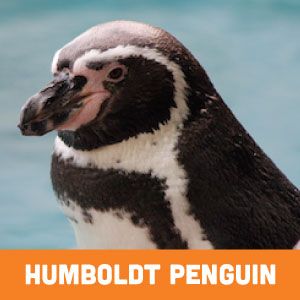
Humboldt Penguin
Spheniscus humboldtiCONSERVATION STATUS
VulnerableNATURAL HABITAT
The Humboldt Penguin lives near rocky mainland shores in the Humboldt Current of Pacific coast Chile and Peru.DIET
IN THE WILD – Fish, squid and krill
IN THE ZOO – Mackerel, smelt and capelinFASCINATING FACTS
• Adults weigh approximately 8-10 pounds and are 15-18 inches tall
• Swim up to 17 miles per hour
• Lose and replace all feathers once a year in a process called molting
• Each of the Zoo's penguins eat 2 pounds of fish per day -

Indian Blue Peafowl
Pavo cristatusCONSERVATION STATUS
Least ConcernNATURAL HABITAT
The peafowl is found in moist and dry deciduous forests and prefers sites where water is available.DIET
IN THE WILD – Seeds, insects, fruit, small mammals and reptiles
IN THE ZOO – Fruits, vegetables, seeds and meatFASCINATING FACTS
• Males are referred to as peacocks, females are peahens and offspring are peachicks
• Have 11 different calls
• Males have an extravagant train of feathers
• Males don’t develop the long train of feathers until age two -
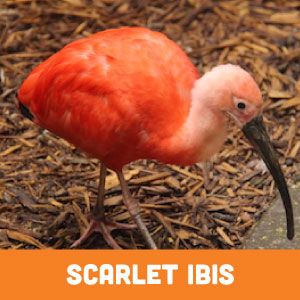
Scarlet Ibis
Eudocimus ruberCONSERVATION STATUS
Least ConcernNATURAL HABITAT
The Scarlet Ibis lives in mudflats, estuaries, shorelines and shallow bay areas.DIET
IN THE WILD – Crustaceans, mollusks, fish, insects, frogs and small snakes
IN THE ZOO – Meat, fish, insects and grainFASCINATING FACTS
• Live up to 20 years
• Males and females guard the nest and help feed the chicks
• Curved, slender bill allows them to probe into water, mud or grass for food
• Fly in v-formation to decrease wind resistance for trailing birds, similar to the technique of drafting in car racing -
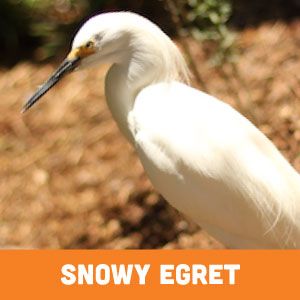
Snowy Egret
Egretta thulaCONSERVATION STATUS
Least ConcernNATURAL HABITAT
The Snowy egret lives in marshes, swamps, ponds, lakes and coastal regions.DIET
IN THE WILD – Reptiles, insects, small fish, fiddler crabs and other crustaceans
IN THE ZOO – Meat, fish, insects and grainFASCINATING FACTS
• Eggs are incubated by both adults.
• Stir up bottom of water with one foot to make prey visible.
• Evidence shows that egret pairs do not recognize each other except at the nest and must display an elaborate greeting ceremony in order to be known.
• At the end of the nineteenth century, feathers were used to adorn women's hats and the high demand made them worth twice the price of gold at the time. -
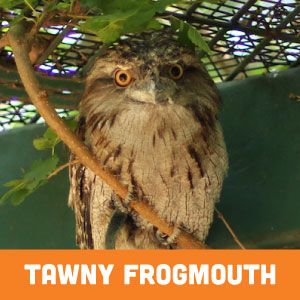
Tawny Frogmouth
Podargus strigoidesCONSERVATION STATUS
Least ConcernNATURAL HABITAT
The Tawny Frogmouth lives in forests, woodlands, urban and rural areas.DIET
IN THE WILD – Insects and small mammals
IN THE ZOO – Insects and rodentsFASCINATING FACTS
• Camouflage feathers allow them to blend in with tree branches
• Often mistaken for an owl
• Catch prey with beak because their feet are weak
• Male and females pair together for life -
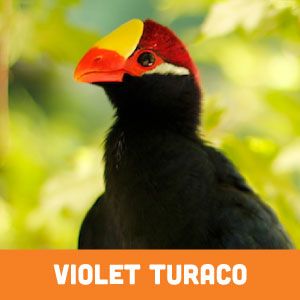
Violet Turaco
Musophaga violaceaCONSERVATION STATUS
Least ConcernNATURAL HABITAT
Violet turacos live in Western Africa.DIET
IN THE WILD – Fruit, flowers and arthropods
IN THE ZOO – Fruit, vegetables, berries and grainFASCINATING FACTS
• Release feathers when caught as survival technique
• Have 30 year lifespan
• Better at running through tree branches than flying
• Both parents take turns sitting on eggs -
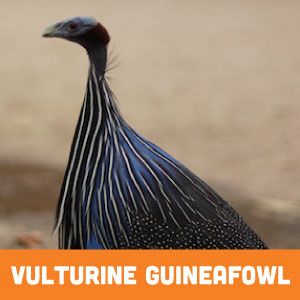
Vulturine Guineafowl
Acryllium vulturinumCONSERVATION STATUS
Least ConcernNATURAL HABITAT
The vulturine guineafowl is found in a variety of habitats including jungles, forests, shrublands, grasslands and even areas of desert, depending on the abundance of food.DIET
IN THE WILD – Worms, insects, seeds, berries and small mammals
IN THE ZOO – Seeds, fruits, vegetables and various grainsFASCINATING FACTS
• Females build a nest out of twigs and leaves on the ground
• Can move up to 22 miles-per-hour
• Form flocks of 25
• Tallest and most colorful of all guineafowl
• Named for its vulture-like head and neck -
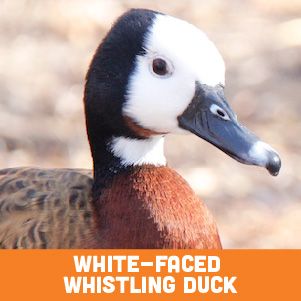
White-Faced Whistling Duck
Dendrocygna viduataCONSERVATION STATUS
Least ConcernNATURAL HABITAT
The white-faced whistling duck lives in a variety of wetland areas. They prefer bodies of freshwater with plentiful vegetation.DIET
IN THE WILD – Seeds, insects and fruit
IN THE ZOO – Fruit, vegetables and specially formulated grainFASCINATING FACTS
• Most vocal in the morning and evening
• Use different whistles for different situations
• Sometimes congregate in very large flocks numbering well into the thousands
• Nest on stick platforms near the ground
• Also called white-faced tree ducks, because they rest in trees
Conservation
Lincoln Children’s Zoo is committed to animal conservation efforts and saving animals from extinction. Home to over 30 endangered animals, the Zoo strives to provide the highest-quality care to these near extinct species. Lincoln Children’s Zoo partners with organizations throughout the world that manage captive animals and wild animals with a goal to create a plan to ensure endangered animals are saved and protected for future generations.
The Zoo is part of the Association of Zoos & Aquarium’s Species Survival Plan, which oversees the management of select species with the goal of enhancing conservation in the wild. Species Survival Plan is led by expert advisors who work together to manage the demographic distribution and long-term sustainability of nearly 500 species.
Photo Ark Collaboration
Lincoln Children’s Zoo collaborates with National Geographic photographer Joel Sartore and his Photo Ark project. The Photo Ark is a groundbreaking effort to document species before they disappear and to get people to care while there’s still time. The Photo Ark started at Lincoln Children’s Zoo with the first photograph taken of a naked mole rat. To date the Photo Ark has documented 10,531 species. Find out more about Joel Sartore’s Photo Ark here.

